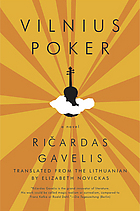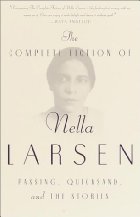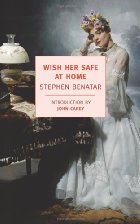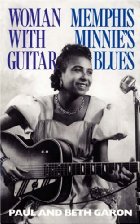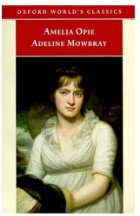Some straightforward observations about Anne Carson's elegy Nox: it comes in a large box, like a rectangular room. Inside the box is a free-floating accordion-style book, which though beautiful is difficult to hold comfortably in the hand; it bends and twists as one turns the pages. The book (the room) opens with an elegy by Catullus for his dead brother, in the original Latin, whose physical appearance is smudged and water-stained, and whose import is, of course, obscure to non-Latin-speaking readers. This entry-way then opens out in at least two directions: for the rest of the book, the left-hand pages contain lexicographical entries enumerating the shades of each word from the Catullus poem; while the right-hand pages gingerly prod the story of Carson's own brother—his haunted life and his sudden death. The non-Latin-speaking reader, attempting to allow the lexical entries to gradually elucidate Catullus's poem, performs a kind of reading gymnastics, holding the accordion-folded book open at the page she has reached, using one finger to mark the location of the Latin verse for easy reference, and balancing the whole outer box in either her palms or her lap.
I was drawn by the presentation of Nox, but I didn't realize at first how integral it is to the experience of meaning in the poem. Carson, like the reader, is handling an unwieldy object as she explores her brother's life and death: one she doesn't know quite how to approach, or hold together; one that threatens to slide out of her hands or unravel like the accordion-folded pages of Nox; one whose shadings and repercussions are difficult to tease out, reflecting one one another unexpectedly like a hall of mirrors. The necessity of supporting an unfamiliar shape makes one feel the full weight of the object in one's hands—this box or book, or the reality of a loved one's death. She writes, of the Catullus poem that begins and permeates her own work,
I never arrived at the translation I would have liked to do of poem 101. But over the years of working at it, I came to think of translating as a room, not exactly an unknown room, where one gropes for the light switch. I guess it never ends. A brother never ends. I prowl him. He does not end.
Carson's poem, like her concept of translation and grief, is three-dimensional in content as well as form. The parallel threads of lexicographical entries and personal passages (interspersed with reproductions of personal mementos—actual letters, photographs, letterhead) play off each other in an almost endlessly resonant way. I was surprised to find myself especially intrigued by the dictionary entries, suggesting as they do the wealth of connotative possibility lying just beneath the skin of language, and also how little of language lies in the words themselves. Supplied only with each word's definition, in the absence of a grammar relating them to one another, any understanding of Catullus's poem 101 remained frustratingly elusive. Take Carson's definition of the word vectus, which occurs in Catullus's opening line "Multas per gentes et multa per aequora vectus":
vectus
veho vehere vexi vectum
[cf. Skt vahati, Gk δχος, OHG wagan,
Eng wain] to convey from one place to
another by bodily effort, to carry (a
rider), to convey (of vehicles, ships,
etc.), to carry (of draught animals); (of
things, with diminished idea of motion)
to sustain a load; to cause to be
transported, bring; (of wind, water, etc.)
to carry along, bear along; in pericula
vectus: driven into danger; (of time) to
carry with it, bring; to cause to extend
or stretch from one point to another; to
travel by some or other conveyance; to
travel by sea, sail; to ride, drive;
(poetical) to be carried on wings, fly;
vecta spolia: borne in triumph; per
noctem in nihilo vehi: to vanish by
night into nothing; quod fugiens semel
hora vexit: what the transient hour
brought once and only once.
Several things. The first, which struck me over and over with these entries, is that they are lovely. This reads as a poem in its own right, from the surface elements (bolded title at the top and narrow, verse-like formatting one the page), to its introduction and development of a theme, to the way it takes that theme to another level through juxtaposition of unexpected images and metaphors. The examples of usage, of course, speak to Carson's larger themes: "driven into danger"; "what the transient hour brought only once"; "to vanish by night into nothing"—all of these fragments swim into the realm of loss and death. Remarkably, the word "nox" (and also noctis, nocte, noctum, meaning "night"), never actually appears in poem 101, but is mentioned over and over in the definitions of the words Catullus does use: in the entry on multas we get "multa nox: late in the night, perhaps too late"; the entry on aequora gives us "inmensumne noctis aequor confecimus?: have we made it across the vast plain of night?"; and even an innocent conjunction like et (and) gives us "(et nocte): (you know it was night)." Gradually, then, "nox" becomes a kind of ghostly presence, suffusing the whole of poem 101 despite never being seen itself. Similarly, the narrator of Nox feels she never understood or even really saw her brother, but cannot escape the reality of his now-permanent absence.
These definitions also emphasize how many different shades of meaning a single word can have, and the difficulty in choosing a path on which to approach a piece of writing. If every one of the fifty-plus words in poem 101 has as many different senses as vectus, how is one to arrive at a single, "definitive" translation, or even a sense of the poem's meaning that will fit inside one's head? Is the word, in this instance, being used in a manner that contains its connotation of bodily effort, or in its poetic sense of being carried along by wings? Is it closer to connoting bearing a load, or being "driven into danger" oneself? Are we sailing, or driving? Is something being carried from one place to another, or caused to extend between the two points? All of these meanings inhere within the word itself; add to that the absence of a grammar specifying how these word-islands are linked together, and Carson's metaphorical room of meaning is dark indeed. Similarly island-like are the scraps of connection she manages to salvage from a lifetime of scant contact with her brother: the single letter he sent from Copenhagen; the two phone calls in five years; the body language of old photographs. How does it all connect? What is the grammar linking these disparate definitions and scattershot senses into a coherent picture?
Perhaps more germaine: if we can't fit it into a coherent picture, how do we make peace with the dead?
Mother is dead.
Yes I guess she is.
She had a lot of pain because of you.
Yes I guess she did.
Why didn't you write.
Well it was hard for me.
Are you sick.
No.
Do you work.
Yes.
Are you happy.
No. Oh no.
Nox is truly a beautiful, affecting piece, and I feel I've only started exploring its dark reaches.
A final note: I would be very interested to hear how a reader who knows or has studied Latin would interact with Carson's elegy, since so much of my own reading experience hinged on trying to make sense of an unknown yet oddly familiar language, and relating that to the speaker's attempts to make sense of death, which is also unknown yet familiar. I imagine, though, that even in the case of a poem in one's native language, the overwhelming number of interpretive possibilities represented by word-combinations would still hold true, as would Carson's own journey throughout these pages.
Nox is my second book for the Clover, Bee, and Reverie Challenge.

